Microscience Microscopy Congress
Tuesday 4th to Thursday 6th July 2023
After the Covid hiatus, this biennial event organised by the Royal Microscopical Society and held at the Manchester Central Convention Complex was re-instated in July this year. It included a huge display of light and electron microscopes from all the major commercial companies along with sellers of accessories and representatives of associated microscopical societies. The Quekett had a display stand along with the Scottish Microscopical Society and the American Microscopical Society. There were many lecture sessions over the three days covering some of the most advanced microscopy methods and innovations, and very active poster sessions for the younger researcher to publicise their work. The RMS had a very interactive display in their ‘Learning Zone’ where visitors were encouraged to get hands on with some of the most modern light microscopes. There was also a small display of historical microscopes, including some of the replica brass instruments donated to the Society.
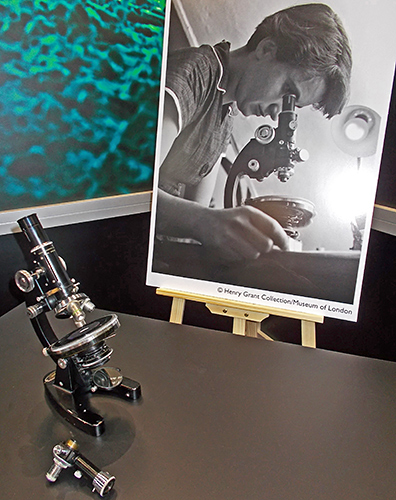 Microscope used by Rosalind Franklin
Microscope used by Rosalind Franklin
This year the Quekett display was quite modest; our past centrepiece of a large video screen displaying pond life was overtaken by one on the RMS stand. Instead, we highlighted the Club commitment to taking microscopes out to public events, often showing samples from the environment. Our display of small microscopes and magnifiers, which children can use themselves at sites to investigate things around them, created quite a lot of interest. We found that the microscopes and our leaflets on ‘Getting Started in Microscopy’ were of particular interest to the younger researchers at the show. It appears that many of the public-funded organisations ask these microscopists to put on public displays at their establishment. Of course, we met a few old friends and local members of the Club as well.
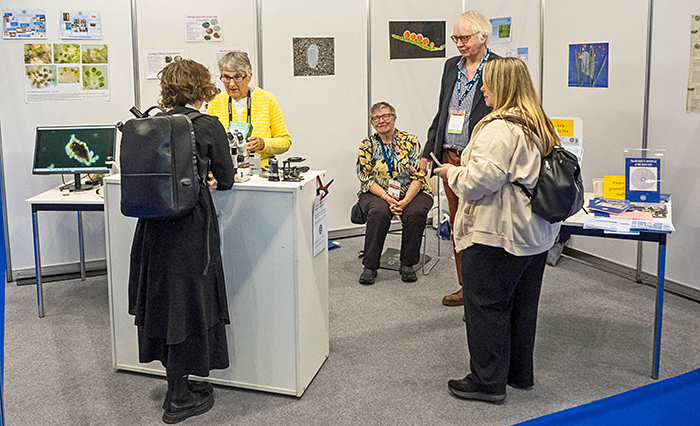 Pam Hamer, Joan Bingley (seated) and Stephen Parker on the Quekett stand
Pam Hamer, Joan Bingley (seated) and Stephen Parker on the Quekett stand
After several years with very limited microscopical meetings it was clear the big manufacturers were determined to set up very impressive displays. There was a significant number of working electron microscopes, along with many of the most modern light microscopes.
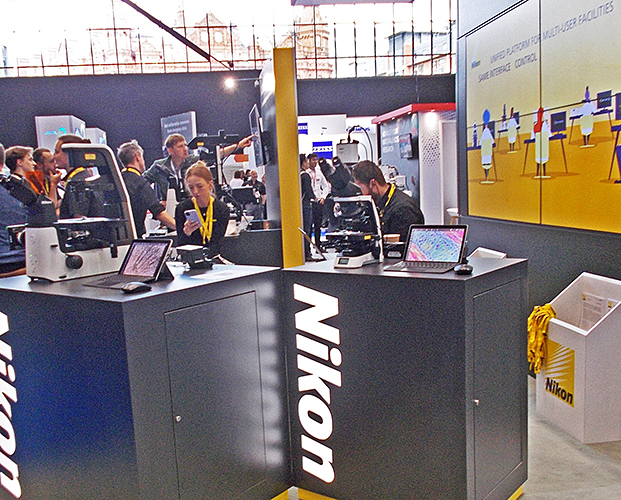 Nikon stand
Nikon stand
Zeiss did, however, have a couple of microscopes from their museum, though I may have been one of the few people to want to use them!
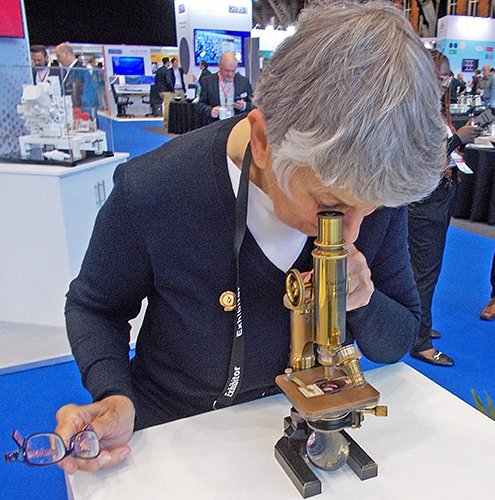 Pam Hamer with an old Zeiss microscope
Pam Hamer with an old Zeiss microscope
A highlight of the Congress is the photographic competition. The images submitted from all around the world were whittled down to a short list which were displayed before the judging. Mike Gibson and Jeremy Poole had images displayed along with Mike Crutchley, but the prizes went elsewhere.
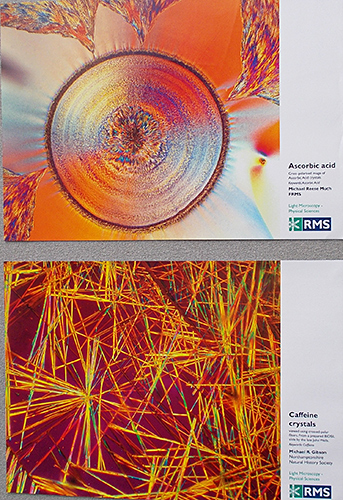 Photomicrograph of caffeine crystals by Mike Gibson (bottom image)
Photomicrograph of caffeine crystals by Mike Gibson (bottom image)
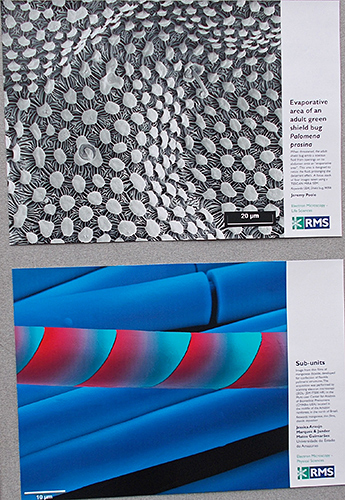 SEM of evaporative area of green shield bug by Jeremy Poole (top image)
SEM of evaporative area of green shield bug by Jeremy Poole (top image)
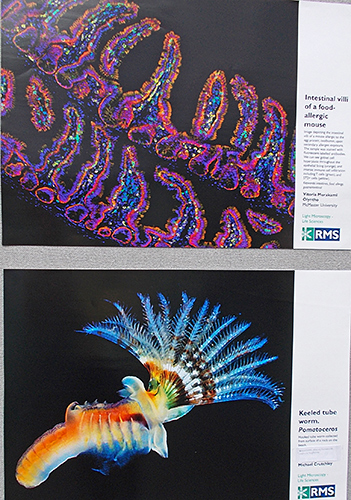 Photomicrograph of keeled tube worm by Mike Crutchley (bottom image)
Photomicrograph of keeled tube worm by Mike Crutchley (bottom image)
The poster display showed some interesting work, though this year there did appear to be a high proportion of electron microscopy topics and relatively few light microscopy ones. I did notice some of interest – one from the British Museum comparing ancient silver items, one from the University of Glasgow comparing new and ancient cotton fibres and one investigating microplastics in milk.
Acknowledgements
Thanks to our members who travelled to Manchester to represent the Club on our stand. Thanks also to the RMS for providing the display space for the Club.
Report and most photographs by Pam Hamer

